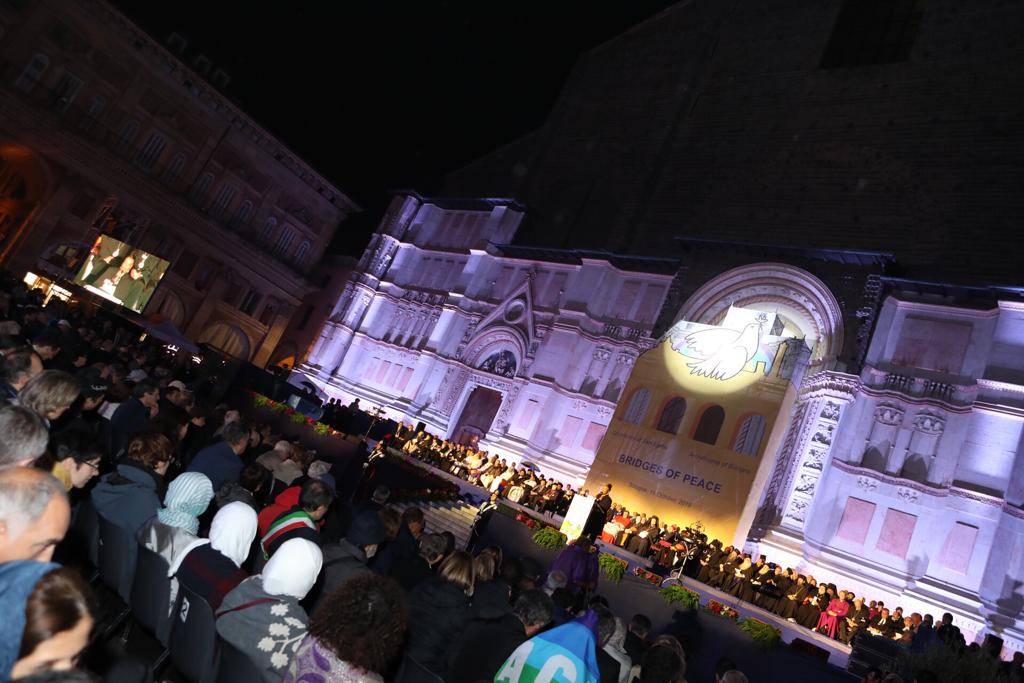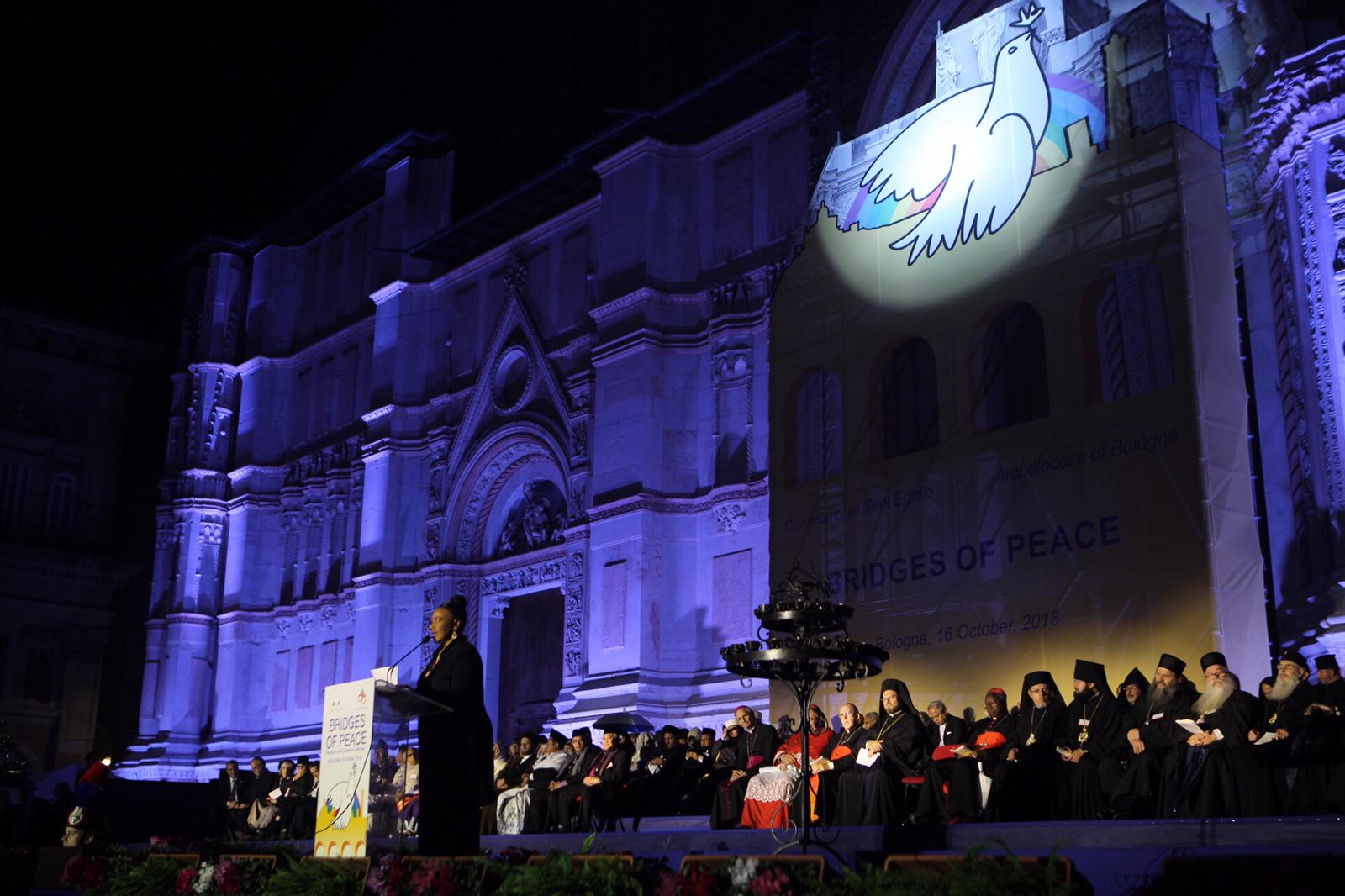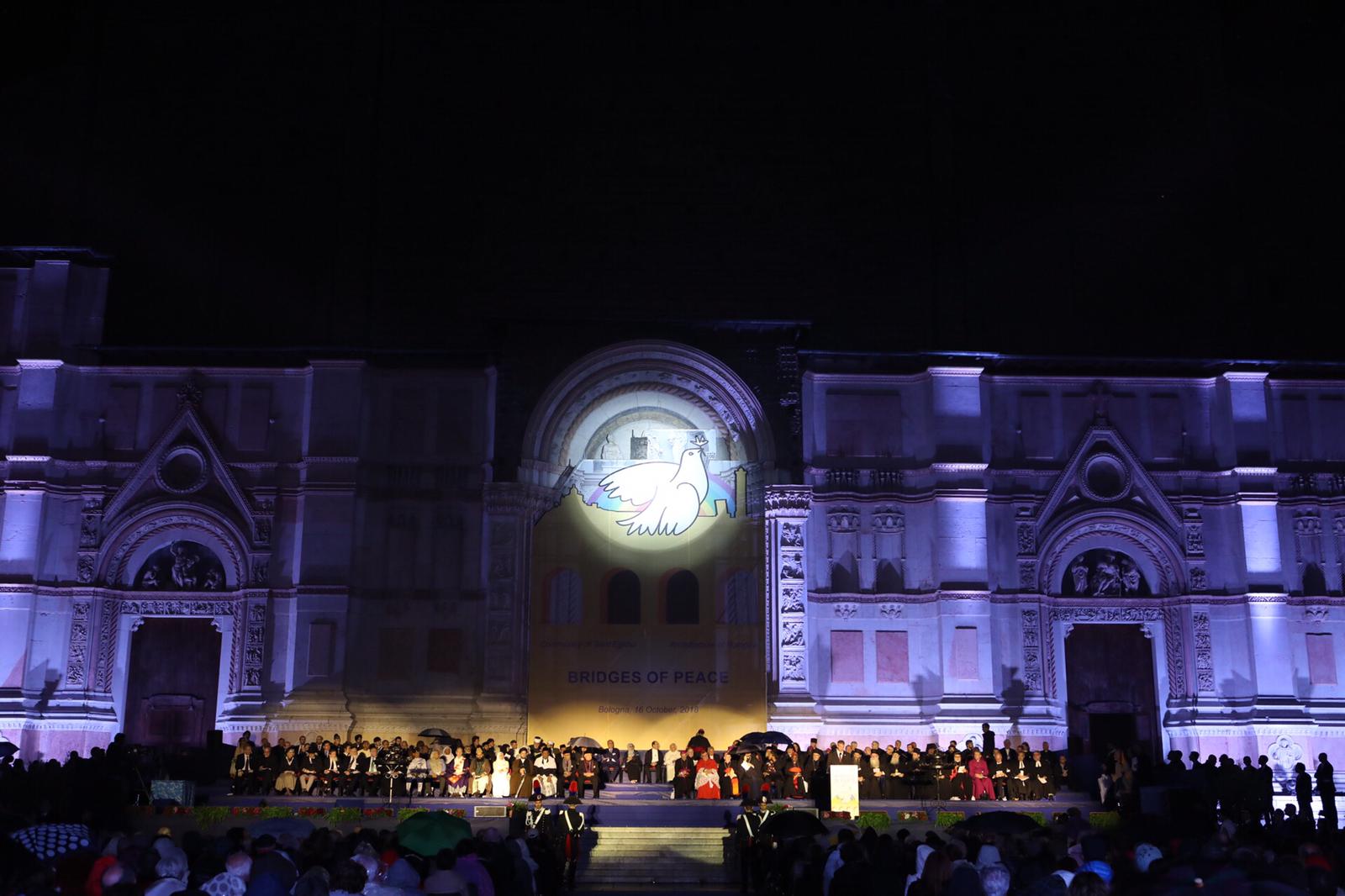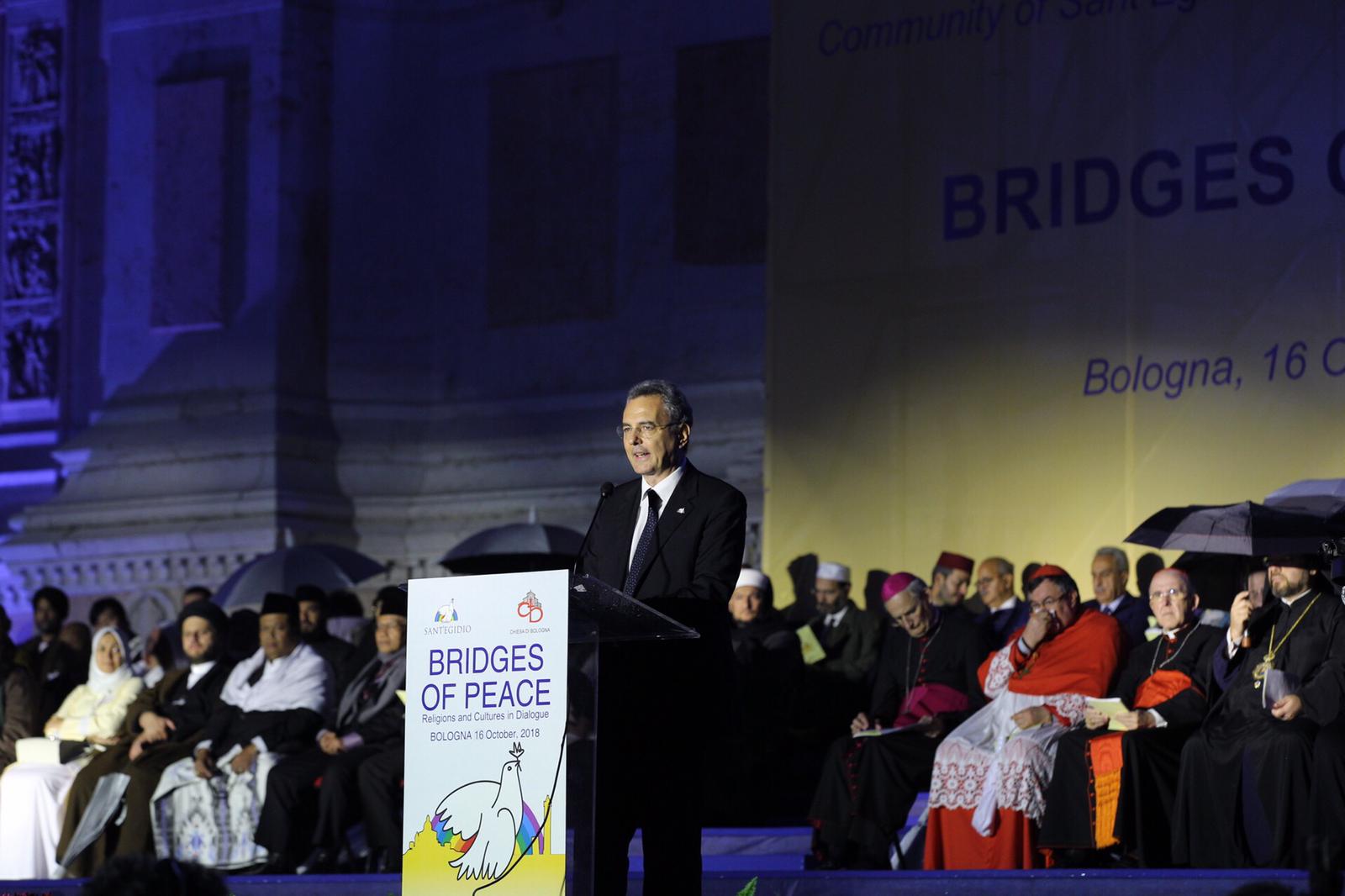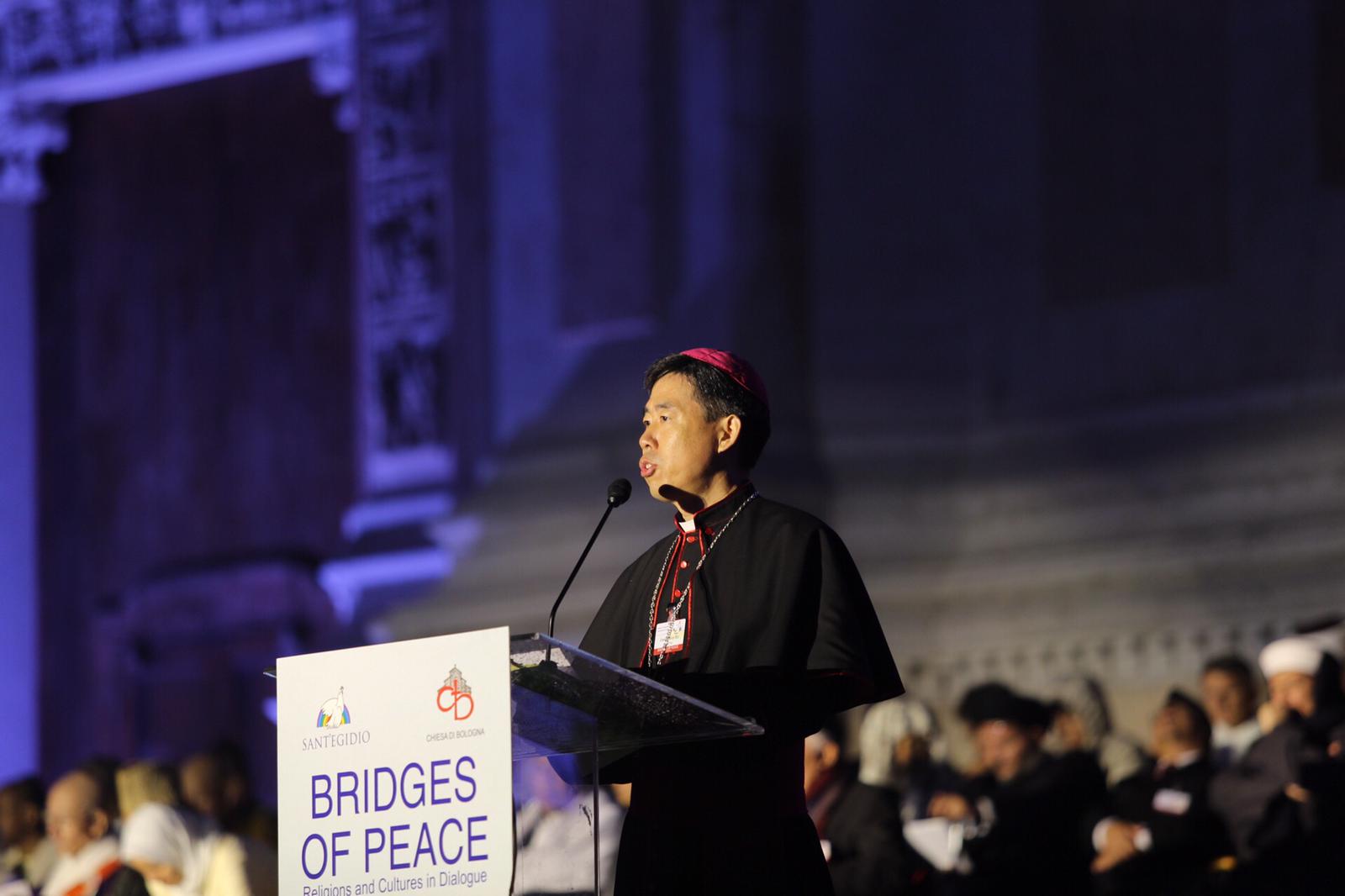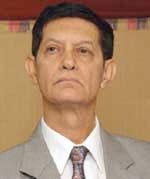
It was a rare honour to have been invited to Assisi in October 1986 to participate in the Day of Prayer for Peace. That event has left an indelible mark on my life. My interfaith journey commenced at Assisi where I had the opportunity of meeting very illustrious persons and learning from them. Meeting Pepe John Paul II was an awesome experience which profoundly influenced my life. This certainly motivated me to work for peace. The community of St. Egidio has been doing very useful work in different parts of the world and I have been associated with them all these years. Over the years I have had the opportunity of meeting Pope John II, Pope Benedict XVI and Pope Francis which has enriched my life and has inspired me to work for peace and human rights. In this short paper, I have portrayed how a few religious and political leaders have built bridges for promoting the culture of peace. This is a reminder of the Spirit of Assisi.
The twentieth century has been the bloodiest in the history of mankind. It was the late Pope John Paul II who termed it as the “century of tears” because 110 million people had been killed. Although the tentacles of violence have spread far and wide, it is heartening to know that there has been an increasing awareness of the need to espouse the culture of peace.
There are several crucial issues facing mankind which need to be addressed urgently. It is imperative that both religious leaders and politicians have a heavy responsibility towards mankind in surmounting these problems.
Ostensibly, religious leaders and politicians have separate roles to play in society. But, history informs us that spiritual leaders are gradually playing a significant role in shaping political developments. Few studies have shown that there is a positive and unifying role for religion. Moreover, morality and politics must blend. Gandhi had said that “For me there is no politics without religion – not the religion of the superstitious and blind religion that hates and fights, but the universal religion of toleration. Politics without morality is a thing to be avoided.”
Many of these issues which are threatening humankind should be addressed on a global scale. As the scourge of war has been continuously haunting mankind, this paper deals with the urgent need to promote peace. Constructive work as bridge builders is being done for this cause both by religious leaders as well as by politicians. A few examples of this laudable work have been delineated here.
It was Pope John Paul II who initiated a very important step in this direction when he invited representatives of the various religions to the World Day of Prayer for Peace at Assisi on October 27, 1986. On that occasion, he emphasized that “the very fact that we have come to Assisi from various parts of the world is in itself a sign of this common path which humanity is called to tread. Either we learn to walk together in peace and harmony, or we drift apart and ruin ourselves and others.” This meeting was a reminder that the problems of the world are so serious that we cannot solve them alone. Therefore, there is an urgent need for interreligious collaboration. It also signalled the importance of interfaith dialogue. According to Time Magazine (December 26, 2005) he was “the co-architect of the Soviet empire’s peaceful fall”. The collapse of communism gave freedom to 55 million people.
In August 2005, Pope Benedict XVI pledged to reinforce friendship with the Jewish people by visiting Germany’s oldest synagogue, which was a clear gesture of reconciliation between Jews and Christians. In his address, he paid tribute to the 11,000 Cologne Jews murdered by the Nazis and describe the holocaust as an “insane and unimaginable process perpetrated by a regime that trampled the sanctity of human life with its feet”.
As soon as Pope Francis took office in March 2013, he greeted a diverse group of religious leaders and emphasised the need for interfaith dialogue. He was instrumental for brokering the thaw between Cuba and the United States. This paved the way to the historic resumption of diplomatic relations between former foes after more than half a century of antagonism. This led to the visit of President Obama to Cuba. In June 2014, he invited President Shimon Peres and Palestinian President Mahmoud Abbas to a solemn prayer meeting in the Vatican to resolve their conflict. In November 2014, he visited Turkey and prayed at the Blue Mosque. He turned towards Mecca in what many saw as a stunning gesture to reconciliation between Islam and Christianity. In November 2017, he visited Myanmar and called upon top Buddhist monks to conquer “prejudice and hatred”, which was targeted towards Muslim Rohingyas. Likewise, the Dalai Lama in June – July 2014, called on Buddhists in Myanmar and Sri Lanka to end the spate of violence towards Muslim minorities. He exhorted, “imagine an image of Buddha before (you) commit such a crime”.
A very prominent Indian spiritual leader, Sri Sri Ravi Shankar has also been building bridges in different war-torn areas of the world. During the gruesome war in Sri Lanka which lasted for 26 years, he intermittently intervened as an unusual interlocutor between the Sinhalese and the Tamils. When he was asked how the founder of the Art of Living movement might be able to bring peace when international actors rom Norway had failed, he replied that “there may be big powers in the world, but they cannot unite the hearts and minds of people”. His efforts to bridge chasms and reduce violence between communities through spiritual methods have been recognised in other countries too, viz., Azerbaijan, Cote d’Ivoire, Ethiopia and Columbia.
When the island of Sri Lanka was plagued by a 26 year long civil war which claimed 80,000 lives, the healing touch was provided by the Sarvodaya movement. Winner of the Magsaysay award, Dr A.T. Ariyaratne had launched this movement in 1958 to build a spiritual and non-violent society, cutting across ethnic borders and religions. Projects had been carried out in more than 15,000 villages for the social betterment of all communities. Meditation camps for thousands are held and participants are urged to pursue non-violent ways and cultivate the art of forgiveness. These principles are rooted in Buddhist and Gandhian ideals which emphasis the values of non-violence, truth and self-sacrifice.
An important Muslim initiative had been taken by King Abdullah of Saudi Arabia. After a surprising and historic visit to the Vatican to meet Pope Benedict XVI, on November 6, 2007, the King convened a Muslim consultation on dialogue in Mecca, June 4-6, 2008, which produced “The Mecca Appeal for Interfaith Dialogue”. This was followed by a dialogue meeting in Madrid in July 2008, remarkable for the fact that alongside Christians and Muslims, invitations were extended to Jews, Buddhists and Hindus.
Christian-Muslim dialogue is being conducted in several countries viz. Turkey, Qatar, South Africa, United States, Southern Philippines and Bangladesh. Interfaith dialogue addresses issues of common concern namely viz., the dangers of war, poverty and development, the threat to our environment, human rights and human responsibility, the promotion of harmony and peace.
Muslim Imams in India are doing very constructive work in deradicalizing Muslim youth who wish to join Islamic State in Iraq and other countries. They have declared fatwas against suicide bombing and emphasised that violence in any form is against Islam. In the Islamic world there are many satellite channels which are devoted exclusively to religion. Ahmad Al-Shugari is one of the rising stars in the new generation whose religion – themed TV shows have helped create a religious revival across the Arab world. He has succeeded in educating the youth which craves for religious identity but is alienated from both politics and the traditional religious establishments.
As far as politicians who have worked for nuclear disarmament are concerned, the most prominent is President Nazarbayev of Kazakhstan. Following the break up of Soviet Union in 1991, on August 29, 1991, he closed the Semipalatinsk nuclear testing range and in May 1992, he voluntarily gave up the entire nuclear arsenal, the fourth largest in the world, returning the weapons to Russia. Over a period of forty years there had been 340 underground and 116 above ground nuclear explosions. These had led to the deaths and disabilities to more than 1.5 million citizens. On August 29, 2012, President Nazarbayev launched the ATOM project (an acronym for “Abolish Testing Our Mission”).
Another outstanding politician who has been a bridge builder is former President Barack Obama. On June 3, 2009, in his oratorical masterpiece which he delivered at Cairo University, he extended his hand of friendship to the Muslim world. In this landmark speech he stated that “I have come here to seek a new beginning between the United States and Muslims around the world: one based upon the mutual interest and mutual respect; and one based on the truth that America and Islam are not exclusive”. He paid tribute to Islam’s influence on religion, culture and civilisation. He stated that in “…Islam is not the part of the problem in combating extremism—it is a part of promoting peace”. By reaching out to the Muslim world, he received a standing ovation—his message was accepted as a balm on hurt wounds. On several occasions, he used quotations from the Holy Quran. His address was philosophical, even visionary.
In recent times he has also emphasised that “when politicians insult Muslims…when a mosque is vandalised, or a kid is called names --- that’s not making us safer… it betrays who we are as a country”.
In May 2016, his trip to Cuba was the first by a US President in 88 years. He declared that he had come to Havana to “bury the last remnant” of the Cold War in the Americas. His presence in Havana ended decades of estrangement between Washington and Cuba.
The famous speech delivered by former President Ronald Reagan on June 12, 1987, recognised that the world can be changed by the power of moral persuasion. On that day Reagan travelled to Berlin for the city’s 750th birthday to speak on the western side of the Brandenburg Gate. This was not only his memorable speech but one of the most important speeches by any US President. Two years later the Berlin Wall fell and by the end of 1991, the Soviet Union was gone and Germany re-united. Reagan had embarked on a form of diplomacy which was aimed not at winning the cold war but at ending it. “General Secretary Gorbachev, if you seek peace, if you seek prosperity for the Soviet Union and Eastern Europe, if you seek liberalisation: Come here to this gate!”, Reagan says. The crowd starts to erupt “Mr Gorbachev, open this gate! Mr Gorbachev tear down this wall!”
Regan sincerely believed that the US-Soviet Arms race was not immutable and the hostility between East-West could be ended through diplomacy. His great success in Berlin proved that sometimes the world can be changed not by the use of force but through the simple power of moral persuasion and dialogue.
